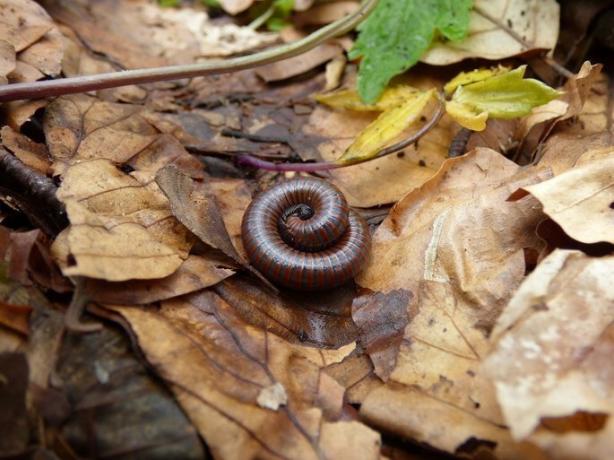The snake louse is a myriapod ("many legs") of the class of diplopods ("double legs"). The animal is also commonly called a gongolo or embuá.
This species of myriapods differs from chilopods such as the centipede, due to its more rounded body and for not having stings or claws for venom inoculation.
They live in humid environments, are found under leaves, wood debris or dead trees, feeding on decaying organic matter (leaves, wood and small animals).
Thus, they are seen in parks, gardens or even in potted plants inside houses.
Snake Lice Characteristics
The snake louse is an invertebrate animal, it has a cylindrical body, elongated and segmented, each segment is composed of two pairs of legs, which can have up to 750 legs. It has a pair of eyes and a pair of antennas.

Eating habits and reproduction
Snake lice feed on dead organic matter, it is a very important animal in decomposition processes. They feed on leaves, branches, trunks and small dead animals mixed with the soil.
The diplopods reproduce sexually, their sexual organs are located in one of the segments of the anterior part.
In males, the sex organ is a modification in the paw of the seventh segment and in females, an opening in the third segment. Females store sperm in the copula and fertilize the eggs when they are laid.
Is snake lice poisonous?
Do not. While centipedes have venomous claws, diplopods are harmless to humans and domestic animals.
They have as a defense mechanism the ability to curl up and protect themselves when touched. They also release an odor composed of iodine and hydrogen cyanide, unpleasant to their predators, but harmless.

How to get rid of snake lice?
Despite being harmless animals, millipedes reproduce with some ease. This reproduction can cause an exaggerated population growth.
To combat snake lice, it is necessary to use chemical insecticides in backyards and gardens that present the infestation.
Remembering that these animals live in humid areas and do not usually enter houses. When this occurs, in general, it is to escape an excess of humidity in the place where they live (excess of rain or irrigation).
To contain them, it is possible to reduce irrigation of gardens, clean gutters and plug drains. If the appearance of animals persists, fumigation must be carried out.
See too:
- arthropods
- Insects
- Terrestrial Invertebrates
- Arachnids


